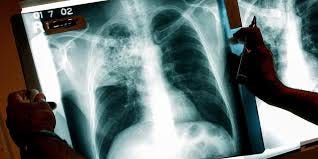Tuberculosis Outbreak in Kansas Continues to Grow, 2 Dead
More than 60 people are undergoing treatment for tuberculosis in the Kansas City area, as the outbreak persists, says the Kansas Department of Health and Environment.
A tuberculosis outbreak in the Kansas City area, which began over a year ago, continues to grow, with at least 67 patients receiving treatment for active tuberculosis, the Kansas Department of Health and Environment (KDHE) reported on Friday.
The outbreak, which claimed the lives of two individuals in 2024, has primarily affected Wyandotte County, where Kansas City is located, with 60 of the 67 active cases concentrated there. Neighboring Johnson County has reported the remaining seven cases. In addition, 79 people in the region have been diagnosed with inactive tuberculosis, a form of the disease that is not contagious and does not present symptoms. However, if left untreated, 5-10% of inactive cases can progress into active tuberculosis.
KDHE officials have noted that these figures are still provisional and will be finalized by the CDC in March. Last year, the state reported over 70 active cases and more than 200 inactive cases.
Dr. Dana Hawkinson, director of infection prevention and control at the University of Kansas Health System, said that while he typically sees only a few active tuberculosis cases annually, this outbreak stands out due to its "scope and numbers." Most of the patients he has treated have not experienced severe symptoms, though some have developed more serious complications.
The Kansas health department has labeled the outbreak as "the largest documented in U.S. history" since the CDC began tracking tuberculosis cases in the 1950s. However, the CDC has disputed this claim, pointing to a tuberculosis outbreak in Georgia homeless shelters from 2015 to 2017, which involved over 170 active cases and more than 400 inactive cases. The CDC also referenced a national outbreak in 2021 linked to a bone graft product that impacted 113 patients.
Tuberculosis (TB) is an airborne bacterial infection primarily affecting the lungs. Symptoms can include chest pain, weakness, and coughing up blood or mucus. If left untreated, tuberculosis can be fatal. While it was responsible for a significant portion of deaths in Europe from the 1600s to the 1800s, modern treatment with antibiotics can prevent fatalities.
Treatment typically lasts several months, with patients initially taking four drugs for about two months before transitioning to a two-drug regimen. Dr. Hawkinson explained that patients usually stop being contagious after 10 to 14 days of treatment, allowing them to return to the community.
While there is a tuberculosis vaccine, it is not generally used in the U.S. and is mainly administered to infants and children in countries with higher rates of the disease.
The ongoing nature of the outbreak means more cases may be identified in the coming weeks. However, Dr. Hawkinson reassured the public that the overall risk of contracting tuberculosis in Kansas remains low, and the state has seen fewer cases in recent months. He stressed the importance of continued public health funding to monitor and control the outbreak.
Nationally, tuberculosis cases have risen each year from 2020 to 2023, breaking a nearly three-decade trend of decline, according to the CDC.


